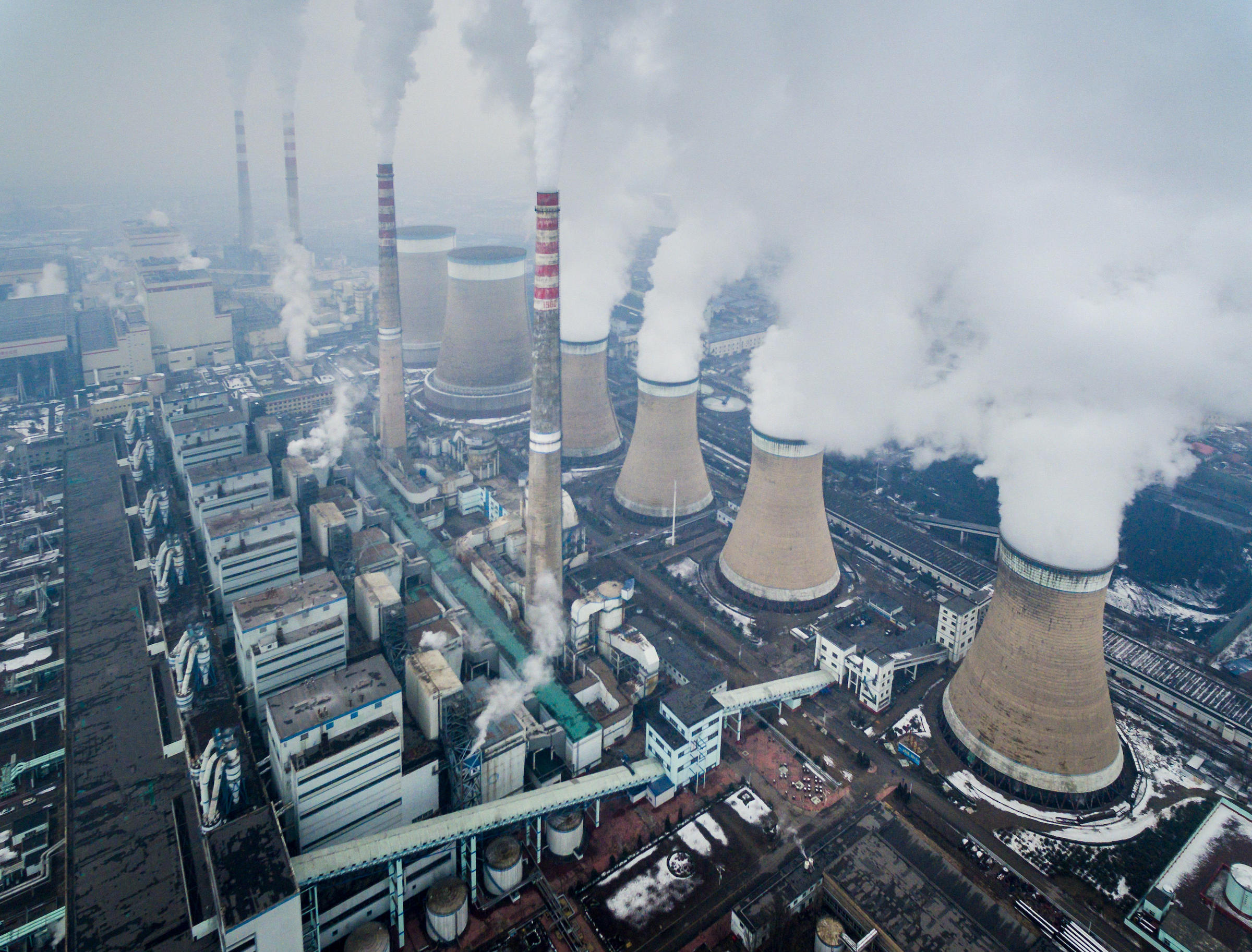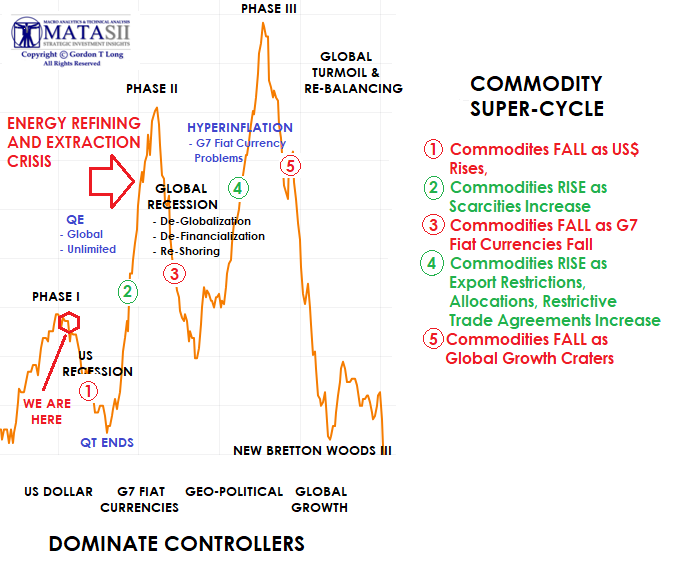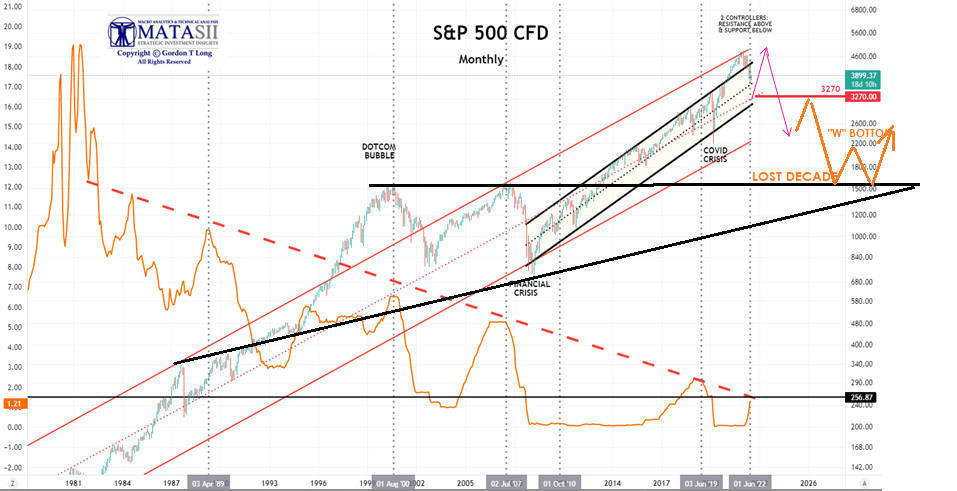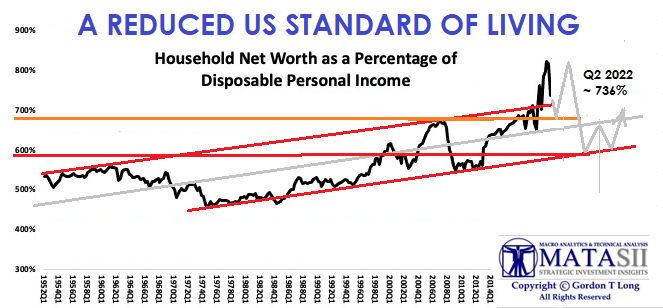|
G7 IS CONFUSING BURNING FOSSIL FUELS WITH CRIPPLING THE PETROLEUM REFINING & EXTRACTION PROCESS
THERE ARE 75 INDUSTRIES DEPENDENT ON THE REFINING & EXTRACTION PROCESS.
Petroleum, Kerosene, Methane, Propane, Butane, Coal and many more are examples of fossil fuel products that are part of the refining and extraction process of fossil fuels. These products are a source of different raw materials used directly or as feed stock for the manufacturing of countless products.
if the US continues to place regulatory restrictions and investment hurdles in the way of refining and the extraction process, we can expect the following sectors to soon experience significant inflation.
SIGNIFICANT INFLATION CAN SOON BE EXPECTED UNDER CURRENT GOVERNMENT POLICES:
- Petroleum Jelly: Vaseline, a worldwide brand of petroleum jelly,
- Toys: Toys are made from blow molding plastics,
- Computers: All plastic parts in a computer are made from fossil fuels. The computer’s insulation and parts that protect a computer from overheating, including capacitors and electrical components, which include polymer capacitors, are made from tetracyanoquinodimethane – a fossil fuel product.
- Asphalt/ Bitumen: Asphalt or bitumen, as is commonly referred to, is a heavy black substance, a byproduct of petroleum. Bitumen is a strong, versatile, weather-resistant, binding material used in paving roads. It binds itself well with gravel, sand and cement to form a tough road surface.
- Synthetic rubber: Synthetic rubber is an artificial elastomer made from synthesized polymers of petroleum by-products. It’s used in making doors, window profiles, water hoses, belts, matting, flooring and many other products. Two-thirds of material used in making car tires are synthetic rubber.
- Paraffin Wax: Paraffin wax is obtained from de-waxing petroleum. Paraffin wax is used in the manufacture of candles, wax paper, shoe polishes, cosmetics, electrical insulators and several other products.
- Fertilizers: Fertilizers used in improving soil fertility are produced synthetically. They include natural gas, a fossil fuel. Ammonia, Nitrogen and Potassium are synthesized from fossil fuels.
- Pesticides: Pesticides help keep unwanted pests under control. They are hydrocarbons synthesized in the laboratory. Chlorine, oxygen, sulfur, phosphorus, nitrogen and bromine are commonly used components. Inert ingredients are dependent on pesticide type. Liquid pesticides use kerosene while others use petroleum distillate as a carrier.
- Detergents: Detergents used in daily household cleaning chores are made from saponification: a process that involves heating fats and oils, which then react with alkali and glycerin. Hydrocarbons found in petroleum and oils are an important component in soap making. They repel water while attracting oil and grease.
- Furniture: Traditional furniture was made of wood. Modern furniture is made from a variety of materials including metal and plastics. Plastics made from hydrocarbons monomers, for example, styrene vinyl chloride acrylonitrile, are used in the making of high-end beautiful furniture.
- Packaging Materials: Plastic packaging materials keep products, especially foodstuff, fresh and well protected. They are made from hydrocarbons, cellulose, coal and natural gas.
- Foam-boards: Surfboards as an example of foam boards are made from foam which are durable and versatile. Foam is processed from polyurethane and encased within a polyester resin. More modern novice surfboards now use an epoxy resin and prolapse polystyrene (PPS) foam, rather than polyurethane and polyester. All surfboards use fiberglass.
- Paints: Paints are made from both organic and inorganic pigments. Most pigments used today are either inorganic or synthetic. Organic pigments are derived from coal tar and other petrochemical products. They are shinier, have a better gloss and produce a beautiful colorful finish.
- Artificial Fibers: Artificial fibers are made from petrochemicals. Two compounds derived from petroleum are polymerized to form a chemical bond that produces adjacent carbon atoms. Different chemical compounds are used to produce different types of synthetic fibers.
- Upholstery: Car upholstery consists of fabric, padding, webbing and springs. Foam and other hydrocarbon products are preferred materials, because of their versatility and durability. The foam makes comfortable padding, which does not wear and tear easily.
- Carpets: Carpets are made from fibers, natural fibers include wool and flax. Modern carpets are made from synthetic fiber, like nylon, polypropylene or polyester. All three are produced by the same chemical processes using oil and natural gas.
- Solvents Diesel Motor Oil Bearing: Solvent products made from petroleum are used to reduce friction and wear between bearing metallic surfaces. They are made by refining a solvent with hydrogen treatment to remove non-hydrocarbons.
- Floor Wax: Floor wax used to shine wooden floors is made from paraffin wax, a hydrocarbon fuel which is obtained by de-waxing light lubricating oil stocks.
- Ballpoint Pens: Ballpoint pens are made of plastic obtained from hydrocarbons. The ink is a mixture of water-resistant synthetic pigments.
- Sports Equipment – Cleats: Example – Football cleats, the protrusions on the sole of football shoes are external attachments that give additional traction during play. They are conical or blade-like shaped and are made from plastic or rubber or metal. Plastic and synthetic rubber football cleats are hydrocarbon products.
- Sweaters: Sweaters can be made from artificial fibers that include polyesters or acrylic, which are petroleum products. They are tough and stretch resistant, have excellent colorfast and dry quickly.
- Boats: All plastics used on a boat including padding and dashboards are made from hydrocarbon materials that are processed into plastics, foam and synthetic rubber.
- Insecticides: Insecticides help to get rid of pesky bugs. Insecticides are synthesized in the laboratory from hydrocarbons derived from petroleum. They contain Chlorine, Oxygen, Sulfur, Phosphorus, Nitrogen and Bromine. Inert ingredients depend on the type of pesticide. Liquid pesticides traditionally use kerosene or other petroleum distillate as a carrier.
- Bicycles: The bicycle is made from various materials. The frame and chains are made from alloy stainless steel; the seat and handlebars are made from synthetic plastic made of hydrocarbons. The smooth running of the wheels is also facilitated by lubricating oil.
- Tires: Synthetic Rubber made from polymers found in crude oil is used to make car tires. Carbon black is a fine soft powder created when crude oil or natural gas is burned with a limited amount of oxygen, causing incomplete combustion and creating a large amount of fine soot that is synthesized to rubber.
- Automotive & Truck Bodies: SUV & cars have to be light and strong. Plastic parts made from petroleum make up almost 50% of a sports car. Seats, dashboards, bumpers and engine components are all made of plastic or synthesized rubber.
- Nail Polish: Nail polish or nail varnish is made from toluene, a petrochemical pigment. Toluene is a smooth solvent lacquer safe to apply on fingernails and toenails. It protects nail plates from cracking and peeling. Nail polish is an organic polymer mixed with several components to get that unique color and texture.
- Outdoor Sporting Equipment: Example – Fish lures are artificial fishing baits. They use movement, vibration, flash and color to bait fish. They have a hook and a colorful plastic part. The plastic bodies of fish lures are quite popular with fishermen. The plastic is a petroleum product made from hydrocarbons.
- Dresses: Many dresses are made from polymer fibers. Polymer fibers are soft, warm, light and have a wool texture. They are easy to dye and hold colorfast. With all these benefits you can understand why the garment industry leans heavily on petroleum-derived synthetic fibers for colorful dresses.
- Golf Bags: Most golf bags are made from polymers derived from petroleum. Synthetic fibers are strong, resilient and elastic – qualities needed for quality golf bags.
- Perfumes: Perfumes are made from organic plant or animal oils but have to be dissolved in a solvent. Petroleum ether, toluene and benzene are used to extract fresh perfume oils from plants like jasmine, mimosa, lavender, sandalwood and many more. Once the extraction is completed, the petroleum-based solvent evaporates.
- Cassettes: Cassette tapes are made of a polyester type plastic film from hydrocarbons. They are layered with a magnetic coating.
- Dishwasher: Bitumen, a crude oil extract, is also used in manufacturing dishwashers. Layers of bitumen are used as sound insulation in high-end dishwashers.
- Computer Hard Drives: Did you know that your computer uses thin bitumen plates that act as silencers? The hard drive and many other components in your computer can be extremely noisy if not silenced.Thanks to bitumen, your computer operates silently.
- Shoe Polish: Shoe polishes are made from waxes, organic solvents and dyes. Petroleum-based solvents are used in the manufacturing process. Hydrocarbon based waxes make smooth and easy to dissolve shoe polish.
- Motorcycle Helmet: A conventional motorcycle helmet has two principal protective components: a thin, hard, outer shell typically made from polycarbonate plastic, fiberglass, or Kevlar and a soft, thick, inner liner usually made of expanded polystyrene or polypropylene “EPS” foam. This is a petroleum-derived hydrocarbon.
- Transparent Tape: Transparent tape or sellotape, as it’s commonly referred to, is made from a plastic derived hydrocarbon. A thin coating of pressure-sensitive adhesive is metered onto the film and dried.
- Compact Discs: Compact discs or CDs are made from polycarbonate plastic covered in a thin layer of aluminum and clear acrylic for protection. The polycarbonate plastic is made from petrochemicals bisphenol A and phosgene.
- Antiseptics: You may be wondering what antiseptics are doing on a fossil fuel list. Antiseptics contain Creosote, a category of carbonaceous chemicals formed by the distillation of various tars and pyrolysis of plant-derived material, such as wood or fossil fuel used as preservatives or antiseptics.
- Clotheslines: Clotheslines are made from a lightweight, strong, water mildew-resistant multi-filament polypropylene (nylon). It has a slippery texture which deters a firm clothes grip, but is strong.
- Curtains: Curtain fabrics are often made from cotton, silk and linen. Synthetic fibers, however, make most curtains – polyester, acrylic, rayon, etc.
- Food Preservatives: Paraffin wax is used as a food preservative that keeps packaged baked goods fresh and mold free. Chocolates and many other products have labels that show petroleum as an ingredient.
- Basketballs: Basketballs are made from either rubber, synthetic rubber or composite materials. The interior of the ball has a bladder that holds air and keeps the ball inflated. The exterior is made of nylon and polyester derived from petrochemicals.
- Soap: Most soaps are petroleum-based products. Soap is a salt of fatty acid used for cleaning. Its most common use is in Households, where it is used for washing, bathing and all housekeeping chores that need an emulsifier.
- Anesthetics: Anesthetics are drugs that help prevent patients from feeling pain during surgery. Most anesthesia drugs are made from ethylene, a colorless and odorless petroleum derivative.
- Crumb Rubber: Crumb rubber is actually recycled rubber. It’s made from recycled tires, which undergo combustion in petroleum to release carbon black and benzothiazole.
- Body Lotions: Body lotions are made with substances called occlusives. Occlusives are petrochemicals that help seal wounds and moisturize your skin.
- Face Creams: Facial creams are petroleum-based products. The ingredients used include perfumes, dyes, waxes and other substances made from petroleum.
- Toothpaste: Toothpaste has several derivatives of petroleum. Poloxamer 407, a petroleum product, is used with other oil bases to dissolve the water-based part of the toothpaste solution.
- Deodorants: Deodorants contain propylene glycol. Propylene glycol is a moisturizer and a solvent for the scent. It helps the scent last longer.
- Crayons: Children love to color using crayons, but do you know that each crayon is made from paraffin wax, a petroleum-based product?
- Pantyhose: Pantyhose made from nylon, a petrochemical compound, is strong and stretches easily. They are also easy to wash and are intended not to run.
- Chewing Gum: One of the most unusual uses of petroleum is chewing gum. Petroleum derived products found in chewing gum give it its elastic properties and lasting texture. The base of the gum consists of paraffin wax and polyethylene.
- Dentures: Dentures obtain their coloring from dyes. They are made with acrylic, a hydrocarbon, together with porcelain, metal and nylon. The acrylic resin can be dyed to look more like a natural gum color.
- Sanitary Products: Tampons and sanitary pads contain Phthalates, which are plastics originating from crude oil that give the smooth look to the tampons.
- Contact Lenses: Contact lenses are made from polymers, a petrochemical. Polymers’ contacts are permissible and allow air to pass. They allow oxygen’s passage to the eye, an extremely important feature.
- Refrigerator: Plastics made from petroleum-based products make up most of the exterior of your refrigerator.
- Nonstick Pots: The coating found on non-stick pots and pans is made from petrochemicals. This coating gives the pan’s surface its non-stick properties, and the pans are also heat resistant.
- Medicines: Many medications use petroleum-based products. Benzene is the most common petroleum derivative used in cough mixtures and other medications.
- Solar Panels: Solar Panels are a major source of renewable energy, generating electricity in places that are not connected to the electricity grid. They are made from petroleum-derived plastic cells.
- Styrofoam: Styrofoam is used in insulation and as a barrier to water seepage in walls, roofs and foundations. It’s made from polystyrene, a petroleum hydrocarbon.
- Cushions: Couch cushions are made from polyurethane, a petroleum-based chemical.
- Linoleum Tiles: Linoleum tiles found on your kitchen floor are made from plastic.
- Toilet Seats: Toilet seats are made from polystyrene, a thermoplastic petroleum derivative.
- Rugs: Most rugs are made from synthetic fibers. Nylon and olefin are the most common fibers used in making door and floor rugs.
- Shampoo: Shampoos are made from liquefied propane and butane, a product of liquefied petroleum gas.
- Tennis Racquets: Tennis racquets are made from polyacrylonitrile and rayon, both petrochemicals.
- Heart Valves: Artificial heart valves save the lives of cardiac patients. Do you know that they are made from graphite, pyrolytic, carbon and polyester, all derived from petroleum?
- Surgeon’s Scrubs: Scrubs have to be strong, waterproof, hygienic. easy to clean and disinfect. Hydrocarbons are used in making surgeons’, doctors’ and nurses’ scrubs.
- Balloons: Foil balloons are light, strong and can withstand extreme pressure. They are made from a petroleum-derived polyester film called biaxially-oriented polyethylene terephthalate.
- Hair Spray: Propane and butane petroleum products are used as carriers in hairsprays.
- Kayaks: Kayaks are made from polyethylene. Roto mold is used to create a seamless strong and durable kayak. A large mold is filled with powdered plastic, which is placed in an oven. The oven melts the powdered plastic into a liquid, which is then cooled into the final product.
- Tetra Pak: Tetra paks, packaging material for milk and other beverages, are layered with hot melted polyethylene to completely seal the shape. The outside is coated to seal in the ink, while the inside is triple coated to protect the contents.
GET THE MESSAGE!
ALL THESE INDUSTRIES AND PRODUCT AREAS WILL SOON BE IMPACTED BY CURRENT INVESTMENT & REGULATORY POLICIES AIMED AT SQUEEZING THE HYDROCARBON REFINING INDUSTRY.
IT WON’T BE JUST PRODUCT SHORTAGES, BUT MASSIVE ACROSS THE BOARD PRICE INFLATION.
CURRENT US GOVERNMENT POLICY IS PLAYING AROUND WITH SOMETHING THEY HAVE NO UNDERSTANDING OF (OR KNOW EXACTLY WHAT THEY ARE DOING – YOU DECIDE!)
Fossil fuels, as you’ve seen, really do run the world. So here is a little brain teaser – imagine for a moment a world without petrochemicals, hydrocarbons and natural gas. How would we produce common everyday products that we take for granted?
|
|







